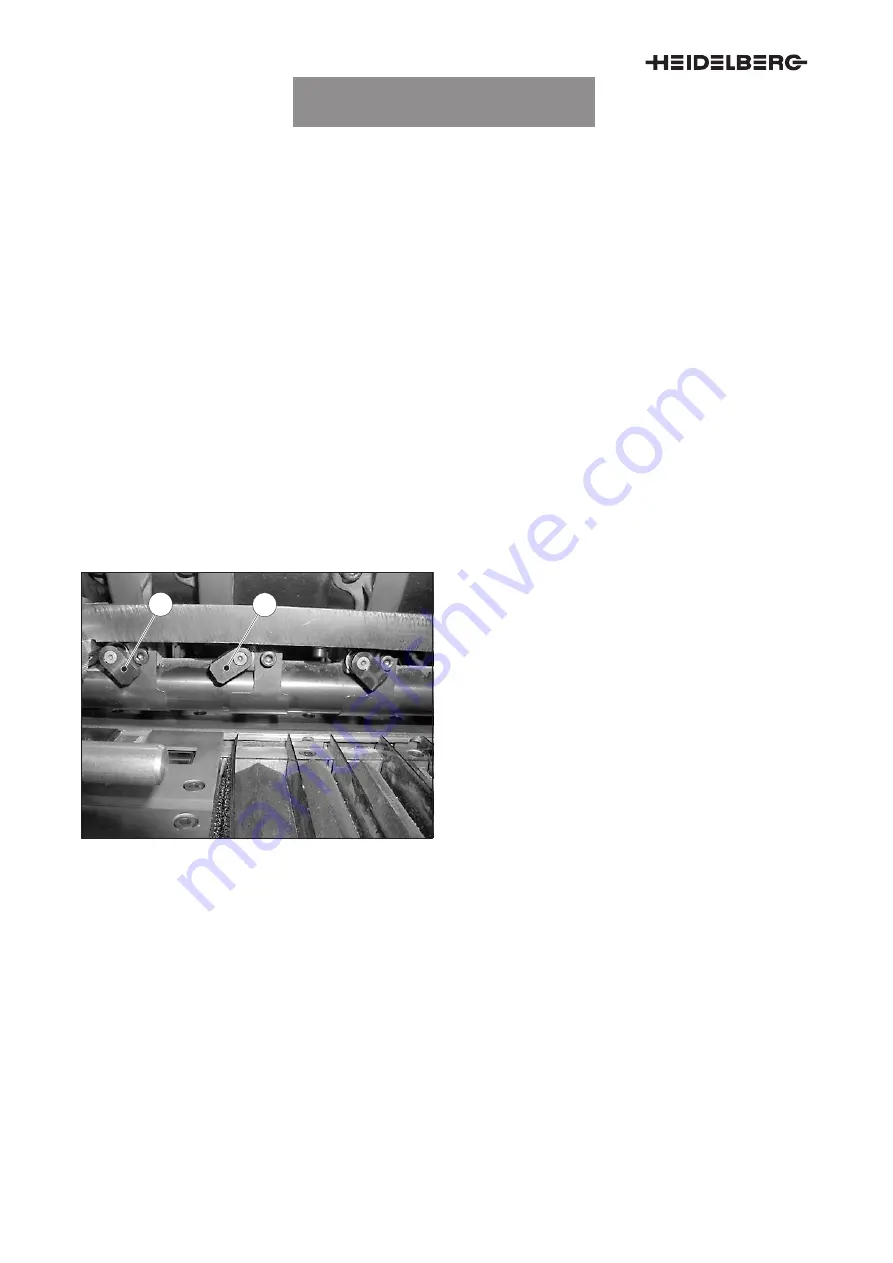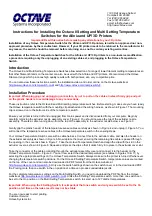
GR SG9015831000000000
Preset Plus Feeder
confidential
C.1.56
16.3 Changing the separator roll position
The control system adjusts the separator roll position
according to the stock thickness. The separator rolls
can swing to two different positions:
D
Paper mode: Up to a stock thickness of
0.4 mm, the separator rolls remain in paper po-
sition.
D
Cardboard mode: If the stock is thicker than
0.4 mm, the separator rolls swing to the card-
board position after the first print sheet has
been fed in.
For stock thickness values between 0.3 mm and
0.4 mm you may select paper mode or cardboard
mode. We recommend cardboard mode to print very
stiff material in this thickness range.
Paper mode cannot be selected if the stock thick-
ness exceeds 0.4 mm.
16.4 Throwing on/off individual separator rolls
1
2
Fig. 70
Throwing on/off separator rolls
You may throw off individual separator rolls. This can
be helpful for printing envelopes, for example, or
other materials of different thickness.
Throwing off the separator roll
1.
Fold the lever on the separator roll clockwise to
O.S. (Fig. 70/2).
Throwing on the separator roll
1.
Fold the lever on the separator roll anti-clock-
wise to D.S. (Fig. 70/1).
16.5 Cleaning the separator rolls
1.
Using a brush or compressed air, remove the
paper dust daily.
2.
If a separator roll marks on the print sheet:
Clean the separator roll with a lightly damp-
ened cloth. Use only water and the cleaners
that are approved by Heidelberg.
The separator roll must be replaced by Heidelberg
Service if it is still tight after it has been cleaned.
Summary of Contents for Speedmaster CD 102
Page 6: ...Main chapter overview A 2...
Page 20: ...Main chapter overview B 2...
Page 114: ...Preset Plus Feeder confidential C 1 76...
Page 118: ...Main chapter overview D 4...
Page 120: ...Chapter overview D 1 2...
Page 134: ...General information confidential D 1 16...
Page 136: ...Chapter overview D 2 2...
Page 146: ...Chapter overview D 3 2...
Page 166: ...Maintenance confidential D 3 22...
















































